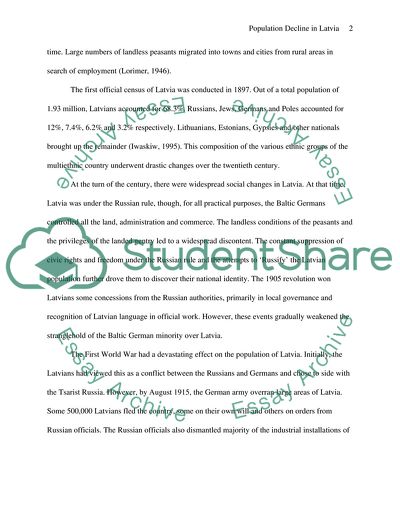Cite this document
(Population Decline in Latvia Essay Example | Topics and Well Written Essays - 3000 words, n.d.)
Population Decline in Latvia Essay Example | Topics and Well Written Essays - 3000 words. https://studentshare.org/sociology/1707764-the-causes-and-consenquences-of-population-decline-in-latvia-from-20th-to-21st-century
Population Decline in Latvia Essay Example | Topics and Well Written Essays - 3000 words. https://studentshare.org/sociology/1707764-the-causes-and-consenquences-of-population-decline-in-latvia-from-20th-to-21st-century
(Population Decline in Latvia Essay Example | Topics and Well Written Essays - 3000 Words)
Population Decline in Latvia Essay Example | Topics and Well Written Essays - 3000 Words. https://studentshare.org/sociology/1707764-the-causes-and-consenquences-of-population-decline-in-latvia-from-20th-to-21st-century.
Population Decline in Latvia Essay Example | Topics and Well Written Essays - 3000 Words. https://studentshare.org/sociology/1707764-the-causes-and-consenquences-of-population-decline-in-latvia-from-20th-to-21st-century.
“Population Decline in Latvia Essay Example | Topics and Well Written Essays - 3000 Words”. https://studentshare.org/sociology/1707764-the-causes-and-consenquences-of-population-decline-in-latvia-from-20th-to-21st-century.


